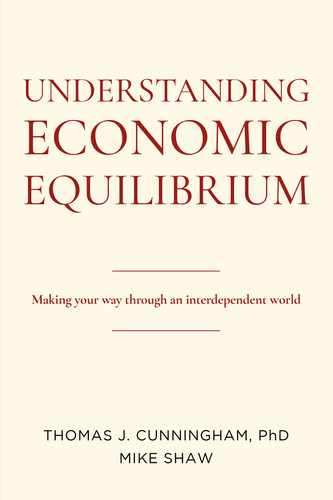“If you work half your life, save half of what you make.” The formula for a comfortable retirement is the premise of a lecture on personal finance by Rosemary Cunningham, Ph.D., economist and professor at Agnes Scott College in Georgia. Her precept is: If you start earning in your mid-twenties, retire in your mid-sixties and live the average lifespan of a U.S. citizen, near 80, you will work half your life, so you will need to save half your earnings to maintain your standard of living in the other half.
There are nuances to the formula, including complications with contributions to and from parents and children, and influences like compound interest and rates of return on investments. Still, as a society, we don’t come close to saving enough of our income during our working years.
Few of us would be willing or able to put aside 50 percent of our paycheck. But formula aside, we have fallen short on savings to the point we face a national dilemma, a dilemma that has emerged through a simultaneous change in both our work life and lifespan: equilibrium at play on a grand scale.
Life After Work
Social Security was instituted in 1937 as a backstop for people living unusually long lives. The retirement age, when you started receiving Social Security, was 65, but average life expectancy was less. You weren’t expected to retire from gainful employment. You worked until you died, as had been the general rule through history. Saving for retirement then, in an intergenerational sense, is a relatively new phenomenon, something we’ve had to consider for less than a hundred years. A radical change of behavior over a couple of generations is possible, but it requires socialization, and retirement was not a familiar concept that could be passed along with any degree of understanding based on experience until very recently.
Once life after work became the norm, many of us didn’t worry about income in retirement. Just as we started getting our health care insurance from our employers after World War II, we had employer-provided pensions, defined benefit plans that delivered pre-established monthly payments starting at retirement age and continuing to death. Between our pension and Social Security, and Medicare as of 1966, we would be taken care of in our golden years.
But our longer lives rendered defined benefit pension plans unaffordable for many employers. Funding for defined benefits proved inadequate to cover the burdens of an aging retired workforce that was living longer than the actuaries who set up the plans had envisioned. Pension obligations bankrupted some firms. Some of the nation’s largest firms had to reorganize not so much because their operations weren’t profitable but because their pension obligations were so large they were no longer financially viable under those arrangements. Prior to General Motors’ bankruptcy in 2009, some financial journalists characterized the business as a pension plan funded by an automobile operation.
Shifting Responsibility
Companies addressed the dilemma by replacing defined benefit pension plans with defined contribution plans, like 401(k)s, where the companies contribute by matching employee contributions up to a certain percentage of the employee’s salary. Defined contribution plans shield the company from future risk. The retirement savings burden shifts to the employee. Workers can save as much as they want, but once they are separated from the firm, the employer has no more risk or responsibility associated with their retirement.
Defined contribution plans serve to illustrate that we don’t save enough. The idea of setting up a retirement plan from the moment you’re employed makes wonderful sense due to the power of compounding returns on savings over time. But when you start working you might not earn enough to put something aside. Getting started can be challenging.
Additionally, a large part of the population doesn’t save at all. The many and advantageous options offered by the retirement investment plan community aren’t meaningful for those struggling to pay their current expenses. Consequently retirement for them is unrealistic, an unfortunate circumstance for increasingly more people in the United States. You might be getting Social Security in your sixties, but it’s not enough to support a work-free retirement. As a result, many people work well past the age they thought they’d retire. For those who don’t or can’t, and for those who haven’t saved anything or haven’t saved enough, the golden years look less golden. It is something to think about as a nation as we face a continuously aging population.
A final note: Since its inception, economics has been called “the dismal science,” which makes our last point of this final chapter an appropriate way to end our manuscript.
Takeaways
• Social Security was instituted in 1937 as a backstop for people living unusually long lives. The retirement age was 65, but average life expectancy was less.
• Funding for defined benefits plans proved inadequate to cover the burdens of an aging retired workforce living longer than the plans’ actuaries expected.
• Pension obligations bankrupted some firms.
• Defined contribution plans shield sponsor companies from the risk of running out of money to fund the plans, as the retirement savings burden shifts to the employee.
• The plight of those who don’t or can’t work past retirement age and those who haven’t saved anything or haven’t saved enough is something to think about as a nation as we face a continuously aging population.
The problem of saving for retirement is a good example of equilibrium in a larger sense, how it applies to how we should behave. If we work half our life and want a constant standard of living over our life, we should limit ourselves to consuming about half of what we make while working and save the other half for when we aren’t. There are complications to the formula, but the stark reality behind the simple arithmetic is a lesson about something we should do, even if we don’t or can’t.
